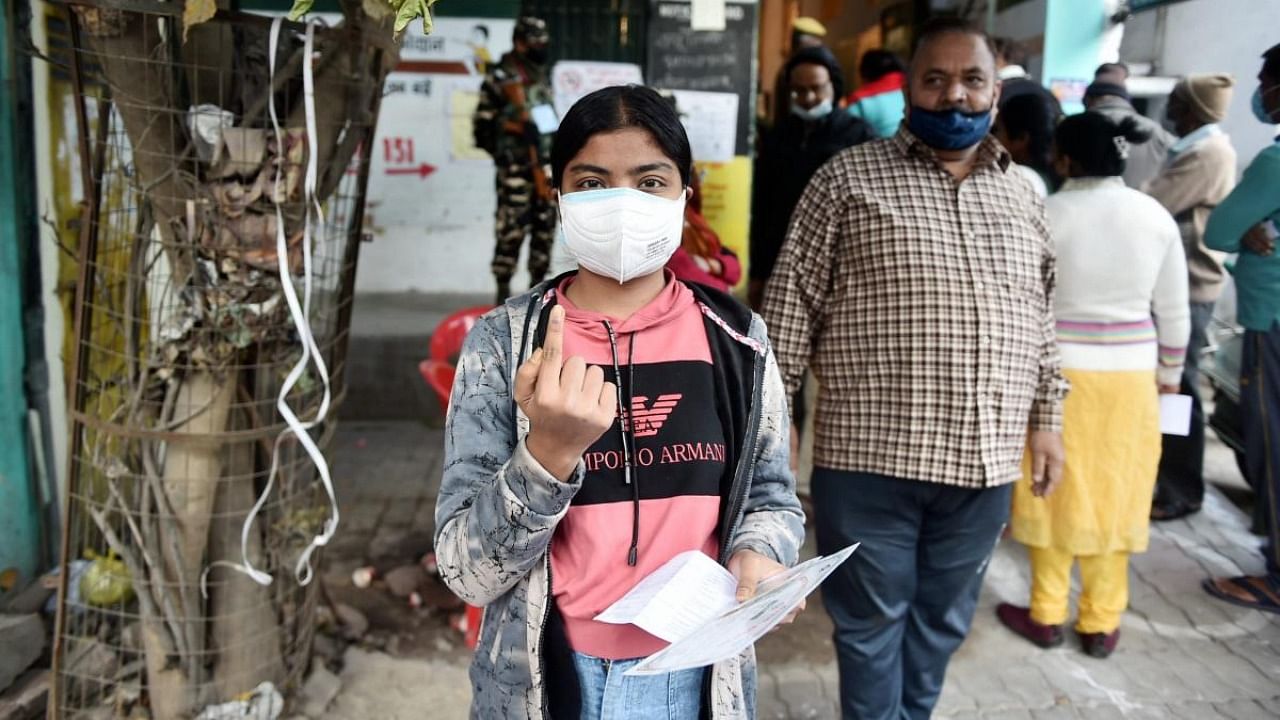
At the halfway stage of the UP Assembly polls, some clear indications are emerging. These indications may have a definite bearing on the outcome of the elections.
The first conclusion, which seems obvious, is that the pauperisation of the lower middle class and poor descending into destitution in large parts of rural UP has emerged as the best electoral hope for the Bharatiya Janata Party (BJP). Notwithstanding the fact that this pauperisation and destitution is the direct outcome of crony capitalism at its worst being followed by both central and state governments, the ruling BJP is out to exploit it cynically.
The BJP calculates that the absolute financial helplessness of these sections will make them grateful for the provision of free ration (though available only till March 2022). In sociological terms, most of this "grateful" population is drawn from non-Yadav OBC's and non-Jatav Dalits. The people of other castes generally do not see the free ration as a dignified situation.
The other narrative which seems to be still working for the BJP is law and order. The BJP has successfully sold the idea to a large section of upper castes that the Samajwadi Party (SP) rule will mean lawlessness, and so these groups are generally sticking to the BJP.
The ruling party can be reasonably assured of electoral allegiance of most of the upper castes, a reasonable slice of non-Jatav Dalits and extreme poverty-ridden sections of non-Yadav OBC's. We should add to this the hardcore vote bank of the BJP. So, with all the challenges the BJP faces, it is still a force to reckon with electorally. Whether that is enough to get them the majority or not in UP is another matter.
On the negative side of the BJP is the failure of the 2017 narrative of communal polarisation. Desperate and continuous attempts have been made to polarise the elections on communal lines, but it is not working beyond the core vote bank.
Apart from this, Yogi Adityanath's rough style of governance has turned him into a big liability for the BJP. It has resulted in Muslim consolidation in favour of Akhilesh Yadav. It is becoming clear that AIMIM's Asaduddin Owaisi and even the Bahujan Samaj Party (BSP) are unable to dent appreciably into this consolidation. Similarly, Yadavs have also almost completely consolidated in favour of the SP. This was not so in 2017. Yadavs, in good numbers, had voted for the BJP even in Yadav belts.
The other outcome of Adityanath's weakness for his own caste is the lack of usual enthusiasm among even the other upper castes. There are reports of many of them extending quiet support in many constituencies to the SP or the BSP and the Congress, based on the caste of the candidate.
The other factor that has hit the BJP hard is its policy of handing over monopoly in agro-products business to few favoured corporates. It resulted in huge resistance among relatively better-off farmers, including Jats of western UP, a loyal vote bank during the last three elections (2014, 2017, 2019). This development, notwithstanding the withdrawal of farm laws, has heralded the decline of the BJP in UP during the current elections.
The most important clarity that has emerged from UP elections is the unmistakable polarisation between the BJP and the SP and its allies. This is resulting in many unique developments.
It should not surprise anyone if eastern UP brings as much bad news for the BJP as western UP. Non-Yadav OBC's in eastern UP, except for Nishads, seem to be consolidating behind the Samajwadi Party alliance. OBC leaders Om Prakash Rajbhar and Swami Prasad Maurya are bringing considerable dividends to the SP. This 'wave' is giving a chance to many Brahmin voters to switch their allegiance to the SP, notwithstanding their usual antipathy to the party. Add to the above, the huge anti-incumbency which the BJP government in UP is facing.
The other emerging conclusion is that a good section of Dalits is still sticking to the BSP. However, there is a rethink among some non-Jatav Dalits in eastern UP who may go with the SP alliance to defeat the BJP. The conversation among many of them seems to centre on the fact that the SP is the best bet since the BSP cannot defeat the BJP.
Finally, the best hope for the BJP is the fourth and fifth phase comprising mainly the Awadh region of UP. Apart from the primary challenger, the SP alliance, some stray challenges to the BJP may come from upper-caste candidates of the Congress and the BSP.
To sum up, the SP alliance seems to be riding a wave against the BJP despite stiff resistance from the ruling party. Elections to the UP Assembly have now, unmistakably, become bipolar. Farm laws, unemployment, price rise, poor governance and huge fears about reservations for the OBCs and SCs being undermined have hit the BJP hard in UP. Free ration and law and order narratives do not appear to be pushing the BJP to victory. If anything else is also working on the ground, it will be known only on the counting day on March 10, 2022.
(Dr Shambhu Shrivastava is a political analyst)
Disclaimer: The views expressed above are the author's own. They do not necessarily reflect the views of DH.